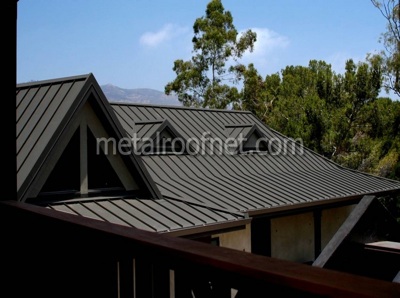 Q. “Can I increase the energy efficiency of my home by choosing a particular roofing material?”
Q. “Can I increase the energy efficiency of my home by choosing a particular roofing material?”
We nearly always hear this question when we chat with someone considering upgrading to a metal roof. First, a little technical lesson - a roof is not considered part of the insulation system of your home. Most wood frame homes have cavities between the wall and ceiling framing members (the pieces of wood from which your home is constructed) that are most often filled with a material intended to reduce the transfer of heat through that section - aka the insulation. When it’s doing what it’s supposed to do, your insulation helps keep the occupied space – the places with the people - at the desired temperature. The better the insulation, the easier it is to keep that occupied space comfortable.
If your home has an attic, there should be insulation between the occupied space, which you pay to heat and/or cool, and the unoccupied attic, which should stay within 10 degrees F (or so) of the outside air temperature. In fact, your attic should be well ventilated enough so that it stays close to the outside air temperatures as this discourages the accumulation of moisture.
If your home has no attic (that is, the same section of structure serves as both the roof and the ceiling), then there should be some sort of insulation material that reduces heat transfer through that assembly. The takeaway from this little roofing lesson is this - just about everything else that makes up your home, including the roof, has a secondary impact on its energy efficiency. What the roof covering does is conduct more or less heat into the attic area, or more or less heat into the ceiling. As a result, attic ventilation, attic volume, the orientation of the home, the latitude of the home, the prevailing winds, being in the shade of a tree or other building – factors like these all have enormous effects on your home’s energy efficiency and energy consumption.
If reducing heat accumulation in the attic is important to you, then a vented roof covering (one where there’s some air space between the part that the sun sees and the roof deck) will be a major asset.
So here's the short answer to the question of the hour - types of roofs that are vented (which will help increase your home's energy efficiency) include concrete, clay and metal. Any material that sits tightly to the roof deck will conduct a higher proportion of the heat it receives from the sun directly to that deck on which that material is vented. Asphalt roofs, for example, actually use the roof deck to help keep them cooler and lasting longer - not ideal if energy efficiency is what you're after.
Even though the roof covering is a relatively minor concern with regard to the energy efficiency of your home, there are a few things that can be done when it’s time to re-roof that will help your home be more energy efficient. Use a vented roof covering if possible, and make certain that if you have an attic you upgrade its ventilation so that it doesn’t trap air. Trapped air in an attic contributes to heat and moisture buildup.
Have more questions? Get our FREE re-roofing booklet - it's about 50 pages' worth of information just like this, with helpful charts, diagrams, pictures, an installer checklist and more. Or post a question in the comments section and we'll answer it.




